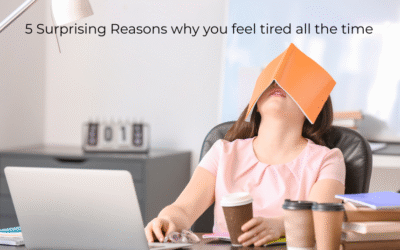Why do we feel loved when we eat sugar?
When we sugar, it activates similar parts in our brain. It releases similar brain chemicals as when we experience emotions such as love, affection, sympathy, empathy, being cared for, being hugged, being appreciated, being rewarded, and being acknowledged.
Often, when we crave these emotions, we experience sugar cravings – but this happens at a very sub-conscious level, so we don’t really know this is going on.
We simply crave sugar and don’t know why.
In this article, I explain more about where sugar cravings come from, but more importantly, what we can do to reduce sugar cravings. I will also explain where sugars are hidden (so that we might be eating it without realising it), why eating sugar is not “giving love” to our bodies, and why sugar promotes faster ageing and all the symptoms that go with ageing.
These are the 6 chapters, and I encourage you to read them all, but if you haven’t got much time, go straight to the one you’re interested most.
1. Where do sugar cravings come from?
2. What can we do to get the feeling of being loved without eating sugar?
3. What else can we do to reduce sugar cravings?
4. Why eating sugar is NOT “giving love to our bodies
5. Why you might think you are avoiding sugar – but it’s so hidden you don’t even know.
6. Why sugar increases all symptoms of ageing – and ages you quicker than you might like.
- a. Reduced energy
- b. More wrinkles
- c. Less flexibility
- d. Increased weight (and inability to lose it)
- e. Inflammation
- f. Dementia
1. Where do sugar cravings come from?
Our bodies are still behaving as if they were living in caveman (or cavewoman) times, and have not evolved that much in the past thousands of years. When there were no supermarkets and no food industry, sugar was very rare in nature. And when it was available, it was necessary for our ancestors to eat as much as they could to store it (in the body as fat reserve). Sugar is easily stored as fat, especially the sugar in fruit (which was mainly the type of sugar that was available). It was so delicious that our ancestors loved to eat as much as they could. It was necessary to store fat as there were frequent food shortages. This is why our bodies still have far more mechanisms to store fat than to lose fat. And why we have mechanisms to crave sugar. We were supposed to find the sweet stuff and eat it when it was available. Sugar does light up the parts of the brain that releases “Happy Hormones”. So, today, we still crave sugar, we still release the hormones that make us feel good, we can still eat a lot of sugar without getting hungry, we still get a boost of energy – and of course, we still store it as fat.
The type of sugar that was available then was mainly found in fruit and some starchy vegetables, until the discovery of grains and potatoes. Nowadays, sugar is basically in EVERYTHING (see more in Chapter 5). And it is not just doing all the things it used to do (cravings, happy hormones, over-eating, energy and weight gain) but it is also causing a lot of other health issues, such as diabetes, inflammation, damage to the arteries and heart disease, possibly contributing to cancer and Alzheimers (see more in Chapter 4).
2. What can we do to get the feeling of being loved without eating sugar?
First of all, this is a very unconscious reason why we crave sugar and most people are not aware of it. I often work with my clients and ask them to look more into Mindful Eating and into “reasons for eating when not feeling hungry”. Together, we explore what could possibly trigger eating – especially eating sugary foods – when we are not really hungry. I ask my clients to observe their hunger and satiety feelings, something many people have lost. The food industry has managed to produce foods that overwrite those natural sensations.
We often feel we are “treating ourselves” when we are eating something sweet. We feel we “deserve” it. We feel we’ve “earned it”. We feel we need to be “rewarded”.
Something, I ask my clients if they discover those things is: “What else could you do that makes you feel good – which does not involve food”.
Here are some lovely suggestions that have come up over the years.
- Getting the hands or feet massaged by a loved one, with beautifully scented hand- or food creams or essential oils. Or if nobody is available, massage yourself.
- Having a hot bath with some deliciously scented bath oils or salts
- Going for a gentle walk for 20mins in the woods or somewhere beautiful in nature.
- Giving a big, long hug to someone, one that really connects heart to heart, and hold for about 5 minutes. Or give yourself a really warm long hug.
- Get a cup of herbal tea, coffee or a hot chocolate (made from raw cocoa powder), hold the cup between both hands and sip slowly and mindfully, doing nothing else.
- Brushing teeth and doing a complete mouth hygiene ritual. Maybe adding a face exfoliation and nice moisturising ritual as well.
- Whatever gives you joy (that is NOT food related).
3. What else can we do to reduce sugar cravings?
Being aware of what causes sugar cravings is the first step. Recognising that the more sugar you eat, the more you crave it. Recognising that sugar is “addictive”. Recognising that sugar is hidden in many foods (see more in Chapter 5). Recognising our processed foods is designed to make you crave it.
That means in short, you need to avoid sugar. And I suggest a total detox of sugar to get rid of the cravings and bring your body back into balance. This might sound drastic and like many of those “fad” diets that are being criticised. However, my experience has taught me that people that do this, are far more likely to stick to a reduced sugar and carb diet in the long run, than those who try reduce it bit by bit. It does not mean giving up sugar for life, it simply means being free from sugar cravings. i.e. YOU are the one who decides when and how much sugar you eat – and not your cravings!
Another important part of sugar detox is to nourish your body with whole foods, loads of vegetables (NO FRUIT!) and protein. Ideally the protein comes from good quality animal and fish sources, as most vegetarian or vegan protein contains also a lot of carbohydrates. Our bodies can only crave sugar, there is no mechanism to crave for vitamins, minerals or protein. Therefore, if we are not getting enough of our vital nourishments, the only way our body can signal this is through cravings. Or did you ever crave broccoli?
Filling up our bodies with fibre, protein and good fats also keeps us fuller for longer. And when we are nourished properly, sugar cravings are reduced.
4. Why eating sugar is NOT “giving love to our bodies
I am very sceptical of “Intuitive eating” which is very much promoted as part of going away from “restrictive diets”. I am also certainly not advocating “restrictive diets”, “calorie counting” or “fad, quick-fix diets”. I also do not support a specific weight, BMI or body shape. We are all unique, we all have different bodies and I would love all my clients to get away from giving out about their bodies. I firmly believe, that loving the shape we are and loving our bodies is the first step to a healthy body. It makes me happier when my clients report more energy, less digestive issues, no pain, feeling better, feeling more positive etc than when they tell me they’ve lost 2 pounds.
The doubt I have about “intuitive eating” is that in my opinion it only works, once you’ve freed yourself from sugar and carb cravings fully. As long as you are still stuck in that craving cycle, you might think you are doing yourself a favour by eating that slice of toast or cake now. Your primal brain (that of the caveman/cavewoman) over-rides your logical, modern part of the brain that knows that eating the cake isn’t the best idea, especially when you are watching your weight or your diabetes. And while intuitive eating wants you to get away from feeling guilty, you most likely will feel some sort of guilt for eating the cake, or else you will just feel sluggish afterwards.
Once you’re free from the cravings or recognise those as cravings, you can do something else instead (see Chapter 2). Once you’ve freed your body for long enough from the actual sugar in the diet, you will be free to chose and then will eat a cake without guilt. It’s driven by a conscious decision and not by craving.
In Chapter 6, I cover more of the negative effects that eating sugar has on our bodies, i.e. showing the reasons why eating sugar is never good for you. If you truly love your body fully and without judgement, you do not want to damage it with sugar. Would you consciously want to harm your children, grandchildren, your partner, or anybody you truly love?
5. Why you might think you are avoiding sugar – but it’s so hidden you don’t even know.
Quite often when I suggest my clients to avoid sugar, they can become quite defensive and say “I haven’t had sugar in my tea for years”. “I haven’t been eating sweets for a very long time”. “I’ve been so good that last couple of months and haven’t had any biscuits or cakes.”
All of those things are very commendable, but they don’t mean that simple cutting out the “obvious” sugars, you are not getting sugar in your diet.
It is important to know that ALL carbohydrates are broken down into sugar in the digestive process. You can completely cut out all products that contain table sugar and still get tons of sugar through your diet.
While every carbohydrate is broken down into sugars eventually, some carbohydrates are broken down very quickly and some less so, this is measured by the glycaemic index which measures the affect a food has on your blood sugar. However, I have noticed through blood sugar monitors that everybody seems to react differently to different types of carbohydrates and different combinations of foods.
It is a fact that all white breads and pastas spike the blood sugar more than brown as there is more fibre in brown bread. Whole fruit that comes with fibre spikes the blood sugar less than fruit juice. And combining your carbs with protein or fat also causes less of a spike. But I have seen in some clients that having a “normal” sandwich on brown bread can spike their blood sugar equally as much as having a cake loaded with sugar. Or even the “healthy” porridge can cause a spike in some people. I’ve seen clients giving up sugar, and then craving tomato sauces and eating loads of it wondering why their blood sugars are high. Onions that are fried long enough caramelise and are increasing their sugar content. In some people having a black coffee increases their blood sugars drastically. And some people’s blood sugar gets increased when they are looking forward to a big event such as a wedding. Or before they need to deliver an important speech. Or before a challenging meeting with the boss. This is because the “stress” hormone cortisol causes a release of stored sugar into the blood stream. And regardless of whether this is positive or negative stress.
You can see a lot of “sugar” does not come from eating sugar alone.
Before moving on, of course reading labels is also important, and my tip is to go first to the actual ingredient list. See where and how much sugar is listed. Note, that it might not always say “sugar”, it could be glucose, fructose, lactose, syrups, high-fructose corn syrup, and many more. Check if it gives you the % of sugar, or where in the list it is. If it’s in the first place of the ingredients, it’s the main ingredient! The second thing to look for is “carbohydrates, of which are sugars”. You might have a high content there, but no sugar was listed in the ingredient list. This means that the sugar is intrinsic. For example, oats and tomatoes come up as high but it’s the natural sugar, so it comes with fibre and won’t be as bad as added sugar.
However, if you want to do a complete sugar detox, you will need to avoid all of those as well for a while.
My recommendation, especially if you might be borderline insulin resistant (pre-diabetic), or if you are simply curios, is to get a blood sugar monitor. You can get the continuous monitors in pharmacies or you can get one where you need to do finger prick tests. Keep a notebook and check how YOUR body reacts to certain foods. Once you see it black on white for yourself, you will be much more likely to follow recommendations.
6. Why sugar increases all symptoms of ageing – and ages you quicker than you might like.
- Reduced energy We often blame lack of energy on getting older. And yes, our power houses – the mitochondria – which produce energy become less effective as we age. However, sugar causes damage to them in the first place. If you want these power houses in the body to remain healthy, it is vital to eat less carbohydrates and increase the intake of healthy fats. Their cell membrane is made out of fats and needs it from the diet as a building block.
- More wrinkles The skin looses elasticity as we age to a certain degree. However, a high sugar diet causes so called AGE (Advanced Glycation End) products. AGEs contribute to the breakdown of collagen and elastin fibers, leading to the loss of skin elasticity and the formation of wrinkles. Additionally, AGEs can also cause inflammation and oxidative stress, further damaging the skin and accelerating the aging process. Read more in this article: Does Sugar Cause Wrinkles? Does Sugar Cause Wrinkles? Aging – Andrew Weil, M.D. (But there are loads more articles, when you google “does sugar cause wrinkles)
- Less flexibility As you see above, the damage to collagen through sugar causes wrinkles, which is a “cosmetic” issue. However, the same glycation process also causes damage to the collagen in your joints. “Elevated blood sugar levels cause collagen (the rubbery stuff in joints that helps them move) to become “glycated.” Glycated means coated with sugar. Glycation causes collagen to form sticky nets, causing joints to lose flexibility.” Excerpt from Why you should consider doing these 7 stretching exercises – Why you should consider doing these 7 stretching exercises – Diabetes Care Community
- Increased weight (and inability to lose it) I think it’s no secret that high sugar consumption causes weight gain. Most people think this is because of the calories in foods with sugar. While many sugary foods are high in calories, it’s not them alone that cause fat storage. Of course, eating more calories than you are using up through exercise and movement, causes fat storage. However, it is also high insulin that leads to fat storage. If your body needs to constantly release insulin because of constant sugar consumption, your cells cannot react to the insulin anymore. Which means your body does not clear the sugar out of the blood quick enough. And it requires more and more insulin. And more insulin signals fat storage. So, rather than using your sugar for energy now, it’s being stored away and difficult to access. Reducing sugar consumption, especially a drastic reduction for a short period of time, can normalise your insulin levels again. Fasting can help normalise your insulin levels. Fasting does not even need to be for long periods, simply giving your body a break of 3-4 hours of not eating, or not eating for 12 hours overnight, can already be beneficial.
- Inflammation Inflammation is now recognised as the underlying cause for all chronic modern diseases such as diabetes, heart disease, dementia and Alzheimer’s, as well as many common autoimmune conditions. Sugar is the number one cause for inflammation through our diet. The number of scientific publications about that connection is huge, and I can’t possibly put all of those in here, but here is one that’s quite comprehensive and well explained. Excessive intake of sugar: An accomplice of inflammation – PMC Excessive intake of sugar: An accomplice of inflammation – PMC
To summarise, as sugar has so many negative effects on your health and is accelerating your ageing process, eating too much is certainly not a sign of LOVE. It’s not showing your
body love and care. Giving sugary gifts for Valentine’s Day is not giving LOVE. Or do you REALLY want to give your loved ones “ill health”? Don’t get me wrong, I do love sweet things in my live too. I do love chocolate every now and then. But since I managed to get rid of the sugar cravings and since I recognise cravings for what they are – I am in charge as to when and how much sugar I eat. I know that I eat as much as my body can deal with. Through measuring my blood sugar, I can see that having a cup of coffee and a sugary almond croissant spikes my blood sugar briefly, but within 30 minutes, my insulin has cleared the sugar out of the blood and the reading is back in normal range. My insulin can function properly because I don’t often and regularly eat sugars and carbohydrates. And since I’m not craving them anymore, I don’t miss them and I am not restricting myself consciously anymore.
I know reducing carbohydrates from your diet is not easy, and it does feel like restriction when you start out. That’s why support and accountability is so important. If you like to get this from me, let’s have a chat. Book a free call with me and we can explore more. Looking forward to hearing from you. Lot’s of love, Ilona





